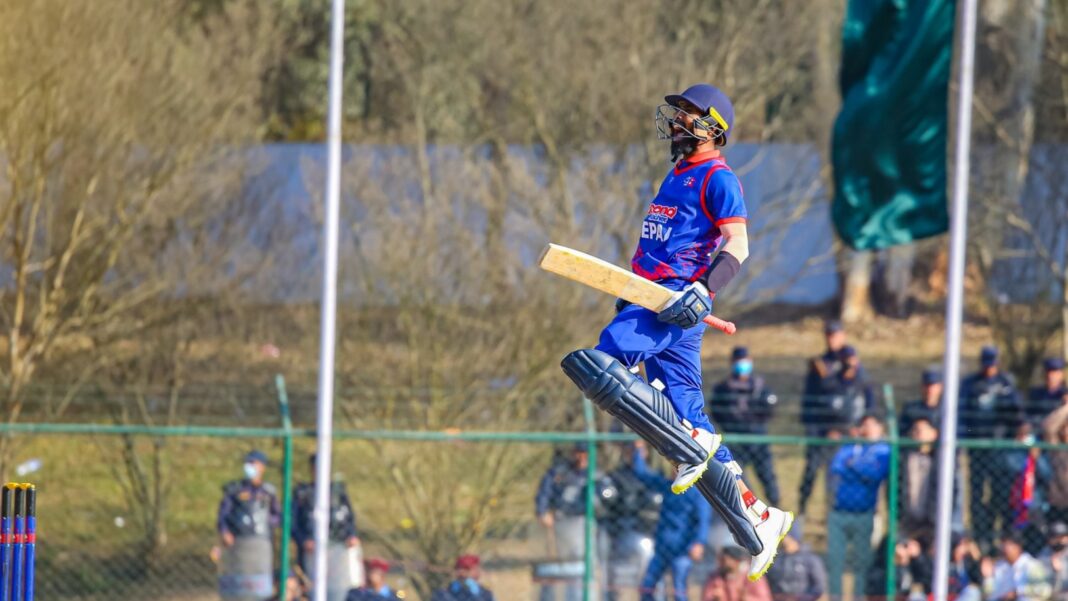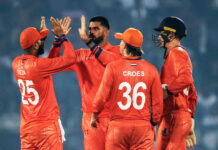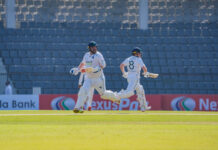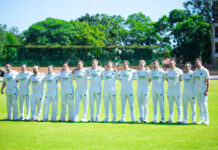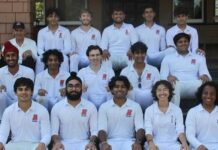Earlier this year, Anil Sah made a comeback to the national side after almost two years, thanks to a stunning performance in Nepal’s premier domestic One Day tournament, the Prime Minister Cup. The stylish, right-handed wicketkeeper-batter amassed 386 runs, leading the runs chart with a century and a couple of fifties, finishing fourth on the table.
In an interview with Emerging Cricket, Sah talked about his comeback series, where he excelled, scoring the fastest ODI fifty for Nepal. He also struck a century while putting together a record-breaking, unbroken 189-run stand with Bhim Sharki, another centurion. Furthermore, he discussed Nepal’s performances in the recently concluded ICC Men’s T20 World Cup. Sah was at the National Cricket Academy (NCA) in India at the time of the interview.
Q: How’s training going? Is today the last day of the training?
A: It’s going well. We went to Rahul Dravid Sir’s Academy for some practice.
Q: How is it different from our NCA?
A: Everything is well-managed to care for players. Facilities like the gym and doctors are available for physio and rehab as well. There are many practice wickets, so multiple players can play at the same time. Everyone was busy practicing together.
Q: Now let’s talk about the PM Cup, where you scored 386 runs. Did you see that tournament as an opportunity to come back to the national team?
A: Rather than a comeback, every series is important since there aren’t many series in Nepal. Yes, I was preparing for the Prime Minister Cup. I had also gone to India for training.
Before the PM Cup, Paras Khadka (Dai) announced that we are building Nepal’s ‘A’ team. It’s always difficult to directly enter the national team after a long gap, so I thought at least I could be in the ‘A’ team and the system. Being in the camp regularly would make it easier later. The target wasn’t exactly the national team. My target was to be in the top five highest run-scorers, so I played with that mindset.
Q: You scored the fastest ODI fifty for Nepal, also chasing the joint highest successful total for Nepal in ODI cricket. What was your mindset going into the run chase in that game against Canada?
A: I couldn’t get a chance in the first match. Monty Sir said to me that I would get the opportunity to play the last two matches, so I was ready for it. I had a chat with Monty Sir before the match. He said, “Don’t take any pressure. You scored heavily at the same venue during the PM Cup, so think of it as a PM Cup match. Don’t try to do anything extra, just do what you’ve been doing so far to get here.”
My thinking was the same. Rather than thinking about the international team or bowler, I focused on playing the ball on its merit. That day, luckily, I got deliveries in my range, backed myself, and played my shots.
Q: In the very next match, you hit your maiden ODI century and put on a record-breaking partnership with Bhim Sharki (another centurion). What were you thinking during that partnership?
A: After playing the first game and hitting the fifty, when I went back to the dressing room, Monty Sir told me to put on my pads and gear. He said, “Now, from here, watch how you would have played if you hadn’t been dismissed. Think of yourself in that position and how you would build your innings.” I only took off the pads after finishing the match. I was watching the match with Monty Sir, thinking about how I would tackle certain situations.
The next day, that visualisation worked. I played my shots at the start. I had already missed one start in the previous match, so I didn’t want to let go of another opportunity. Bhim was also pushing me to bat deep from the other end. More often than not, our Nepali batters tend to throw away their wickets after getting set, rather than the bowlers taking them. I wanted to prevent that and try to put on a small partnership, like 10-15 runs or 4-5 overs. We communicated well in that partnership on how to tackle each bowler.
Q: After that, you couldn’t do well in the next tri-nation ODI series. You had a string of low scores except for one fifty chasing a modest total. Where did it go wrong for Nepal? Did the early starts cause the poor show?
A: The conditions were different before that series. It was also raining during the games and early morning conditions were tough. Totals are different when you play on flat wickets. We missed our planning. We started playing our shots early on when conditions weren’t favorable for batters. I think if we had respected the conditions and controlled our shots, it could have been different. Despite not putting 200 runs on the board, we were still fighting. We could have scored 220-230. We kept losing wickets early. We missed out because we couldn’t take responsibility.
Q: Your form slipped a bit in the West Indies ‘A’ series, where the squad for the T20 WC was to be picked. You proved yourself as a contender by hitting an important fifty in the 170-ish run chase in the last game of the series. How crucial was that fifty?
A: Before the West Indies ‘A’ series, I didn’t get a single game in Oman. From then on, doubt started to creep in, and I didn’t have any special performances in the next series as well. It becomes difficult for a player if he is not performing and not getting any games. I knew the T20 World Cup was coming, but I didn’t even think about it before the Prime Minister Cup. However, closer to the date, I started thinking about it, and it felt like pressure.
Then I told myself, “Why am I taking this pressure?” Until a few days ago, I wasn’t thinking about being on the team or playing in the World Cup. I backed myself to play my natural game. Luckily, the World Cup squad was announced, and after that, I struck a fifty. I spoke with Monty Sir and a few seniors from Kalaiya (hometown). They told me to relax now that my name was in the squad.
Q: Nepal had a lengthy preparation for the World Cup. The stadium was filled with Nepali fans. Despite that, Nepal lost the opening match against Netherlands after falling 10-15 runs short and some fielding lapses. Where did it go wrong?
A: We couldn’t calculate the right total for the first innings in those conditions. We were thinking about 150-plus. We thought it was a high-scoring pitch after the Canada vs USA game, so we tried to play accordingly. We realized later that 130-135 was enough but it was too late by then. When the run rate is below 6 in T20i, there isn’t much pressure on the batting team. Yeah, we had a few misfields, although we fought hard. It would have been easier for the bowlers if we had added an extra 10-15 runs. That total could have been defended against the Dutch.
Q: Did you think Nepal could have fought so closely against South Africa before the start of the match?
A: No, I don’t think anyone thought that before the match. But one thing was certain—we were determined not to let them win easily. We were watching South Africa’s matches, which were low-scoring. Anything can happen in low-scoring T20s.
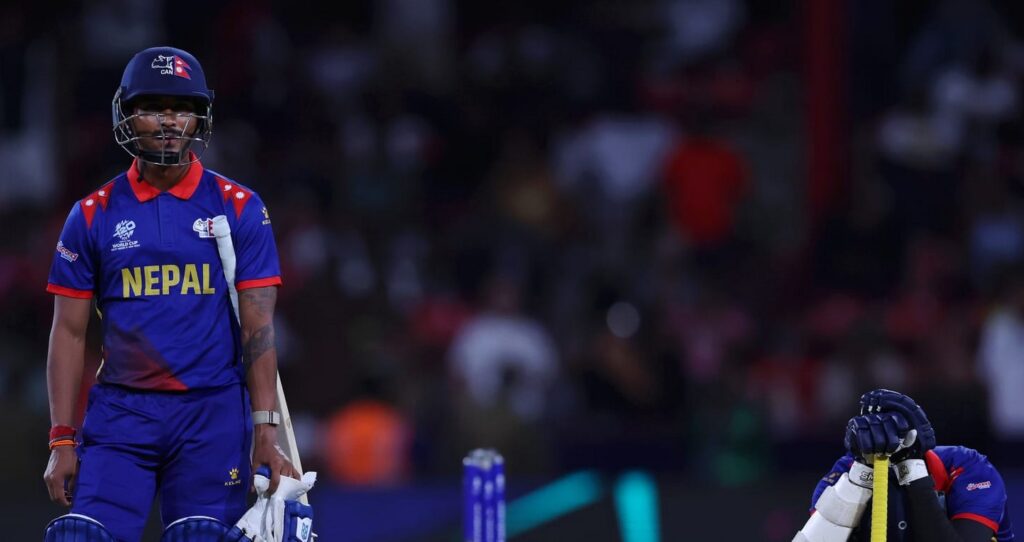
From my personal experience, the pitch was in our favour. We’ve played more on those types of wickets compared to them. They usually play on good wickets, which is also why we restricted them to a small total. We batted better than them. Maybe it was a lack of maturity and experience. We didn’t try anything different; they followed their basics. We also followed the basics, but in the middle of the game, everything changed after my wicket. We could have won that match easily if I had batted for another 2-3 overs.
Q: How was your experience facing Anrich Nortje, one of the fastest bowlers in the world?
A: Yeah, he was quick. We hadn’t faced such bowlers before. We knew they were fast, so we were mentally prepared. We couldn’t escape that. I watch the opponent’s videos closely for 1-2 hours before sleeping. I used to plan how I would tackle the stock ball of both Nortje and Rabada. I didn’t watch much of spin deliveries. Nortje was bowling well in that WC, so I was watching his videos from that World Cup instead of old ones, seeing how he was bowling according to the pitch. I was picking my shots and areas and talked with Nandan Sir and Monty Sir. They had pace, bounce, and height, so it was difficult to score runs in front of the wicket. It’s risky to play against the line to fast bowlers, but you have to take the risk. I was mentally ready to take risks.
Q: You had a good partnership with Asif Sheikh. What were you thinking when Markram came into bowl? Were you thinking of taking the game further away from South Africa by hitting 10-12 runs?
A: We never planned to score 10-12 runs because we had more balls and fewer runs to score. Markram is also my favorite player. I closely follow him. He bowls well and picks wickets. I told Asif, “He doesn’t give much flight. He usually contains the batter, so don’t play unnecessary shots. He’s come to take wickets. Let’s go for singles.” After picking singles, he flighted one, and my hands automatically went for it (it was in my range), but I couldn’t commit fully. It was a mishit, and I got out. From the outside, it might look like I got out trying to hit him for a six. If my mentality was for a six, it could have gone for six. But the mentality was only for singles and doubles—defensive but positive.
Q: Nepal needed only 30 runs in the last 6 overs. That equation changed to 16 off 12 balls. What was the mood in the pavilion?
A: Even after my dismissal, we thought we would win because Asif was there. Dipendra was there. I think we played too defensively, leaving 16 runs for the last two overs. It’s difficult to score 16 runs against a team as experienced as South Africa. It wasn’t in our favor in the last few overs. Yeah, there was belief, but also doubt because they were experienced, and we hadn’t played in that situation at this level.
We shouldn’t have let the game go to the last over. If I hadn’t been dismissed, the game wouldn’t have gone to the last over. Even if Asif was there, we could have won even if the game had gone to the last over. It was not an easy pitch to score runs for a new batter. The way we started our partnership, we should have carried through to the end.
Q: Gulshan Jha faced all six balls in the last over. Could they have rotated the strike?
A: Gulshan might have made that decision on his own. Needing eight runs in the last over creates pressure. He played his shots on the offside. He plays well on the offside too, but he missed a few balls. Yes, we could have won by rotating the strike. The ball wasn’t near his body to score ones and twos, which is why he went for the big shots.
How much time do you get to think in such a pressure situation? It didn’t cross my mind what Sompal (Dai) and Gulshan did or didn’t do. The only thing on my mind was why I played that shot. Yes, it was a loose ball, but I keep thinking about why my bat went for it.
Q: How did you motivate yourself after the loss and before the Bangladesh match?
A: Mentally, we were down after that 1-run loss because we didn’t think it would get that close. Everything was in our favor, yet we lost. That wasn’t a game we should have lost. Our morale was low. Monty Sir said if we kept on having this mentality and wasted all our energy, the Bangladesh game would be difficult for us. The sooner we moved on from this, the easier it would be. That was also an important game to win.
The way we played, we deserved to win at least one game. He was motivating everyone, calling individuals personally. We didn’t have time to recover from the loss. The mentality could have been different had we won the game. The wicket was conducive to bowling. We made the same mistakes again. We couldn’t put together a partnership at the top, and then more pressure was on. Dipendra Airee and Kushal Malla played well, but we lost too many wickets early on, so they had to restrict their shots. And we were left with 22 runs to chase in 2 overs. It was difficult to score those runs against Mustafizur, who is an experienced death bowler, and the conditions were favorable for his bowling skill set.
Q: How was the World Cup overall in terms of fans and vibes?
A: It was a fantastic experience. Fans came out more than we expected in the USA and West Indies. We got good support from them. Unfortunately, we couldn’t meet their expectations due to our lack of experience.
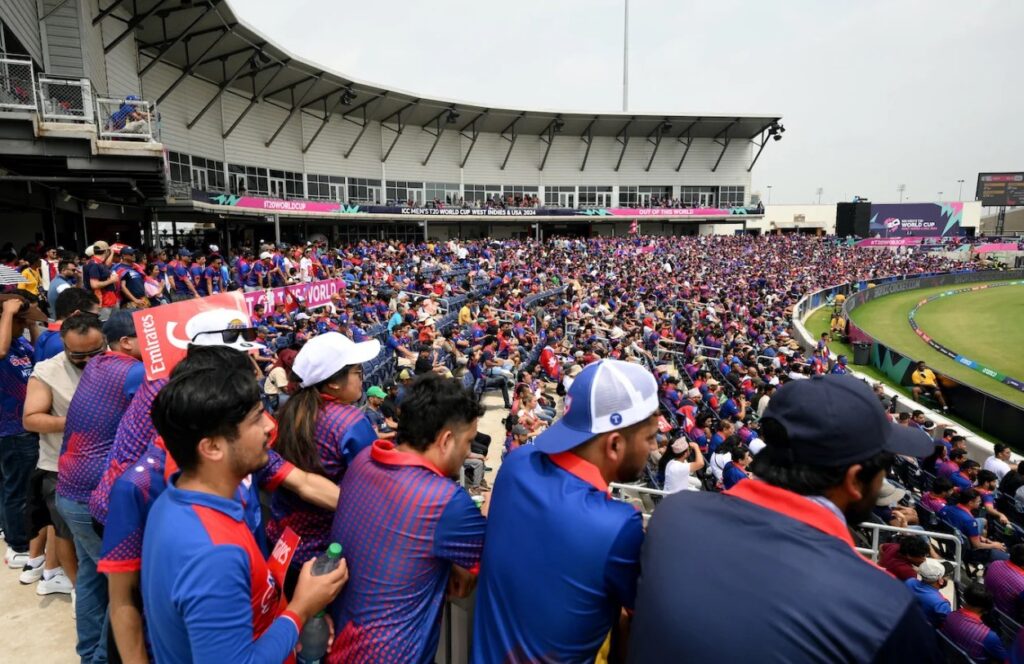
Q: Last time you said you wanted to bat in the top order. You have batted in both opening and number three positions. What’s your preferred position?
A: There’s not much difference between opening and batting at number three. If a wicket falls early, there’s pressure for number three. If the partnership is there, it becomes easier.
Q: What goals do you set for the next series? A century or 200-300 runs?
A: I have personal goals for each series. We have already lost three matches at home. So, the upcoming series in Canada and the USA are important but tough at the same time. Wins are important. Certain personal goals are there, but the focus is more on what the team requires.
Q: When we last chatted, you said the final of the Everest Premier League 2017 and receiving ODI status were your top moments. Has that changed now?
A: I haven’t thought much about it. Maybe the best performance hasn’t come yet. It will come in time.
Q: Where do you see yourself in the next five years?
A: I cannot think that far ahead, but we will try to get as many wins as possible in the next few series.
Q: You have already struck a century in ODIs. Are you thinking of scoring one in T20Is as well?
A: I don’t focus on scoring specific runs. As top-order batters, our goal is to provide a strong start. After that, we aim for big runs based on the situation. If we go in with the mindset of, “I have to score a hundred,” it creates too much pressure. I never approach batting with that thought.
You’re reading Emerging Cricket — brought to you by a passionate group of volunteers with a vision for cricket to be a truly global sport, and a mission to inspire passion to grow the game.
Be sure to check out our homepage for all the latest news, please subscribe for regular updates, and follow EC on Twitter, Facebook, LinkedIn and YouTube.
Don’t know where to start? Check out our features list, country profiles, and subscribe to our podcast. Support us from US$2 a month — and get exclusive benefits, by becoming an EC Patron.

